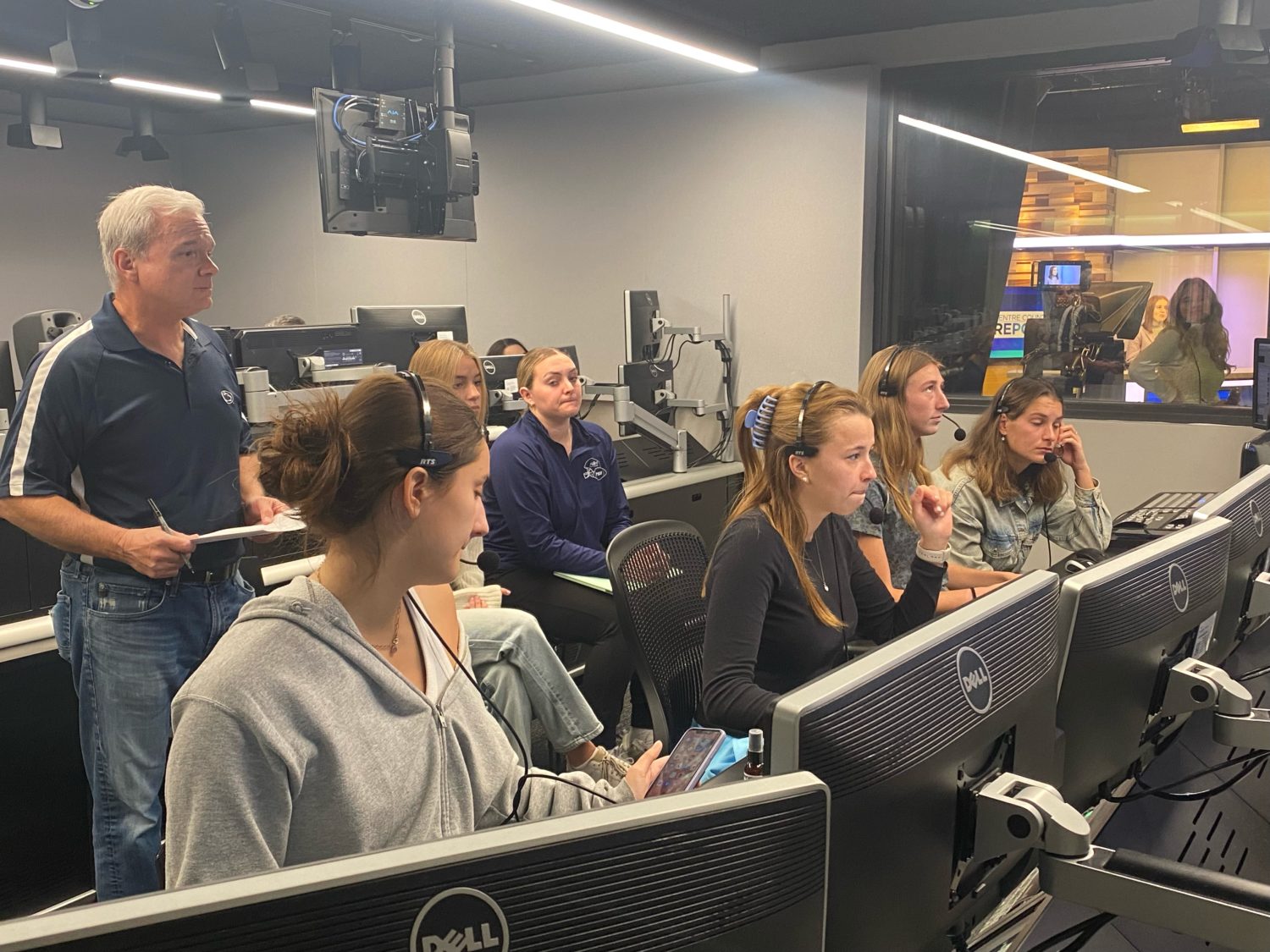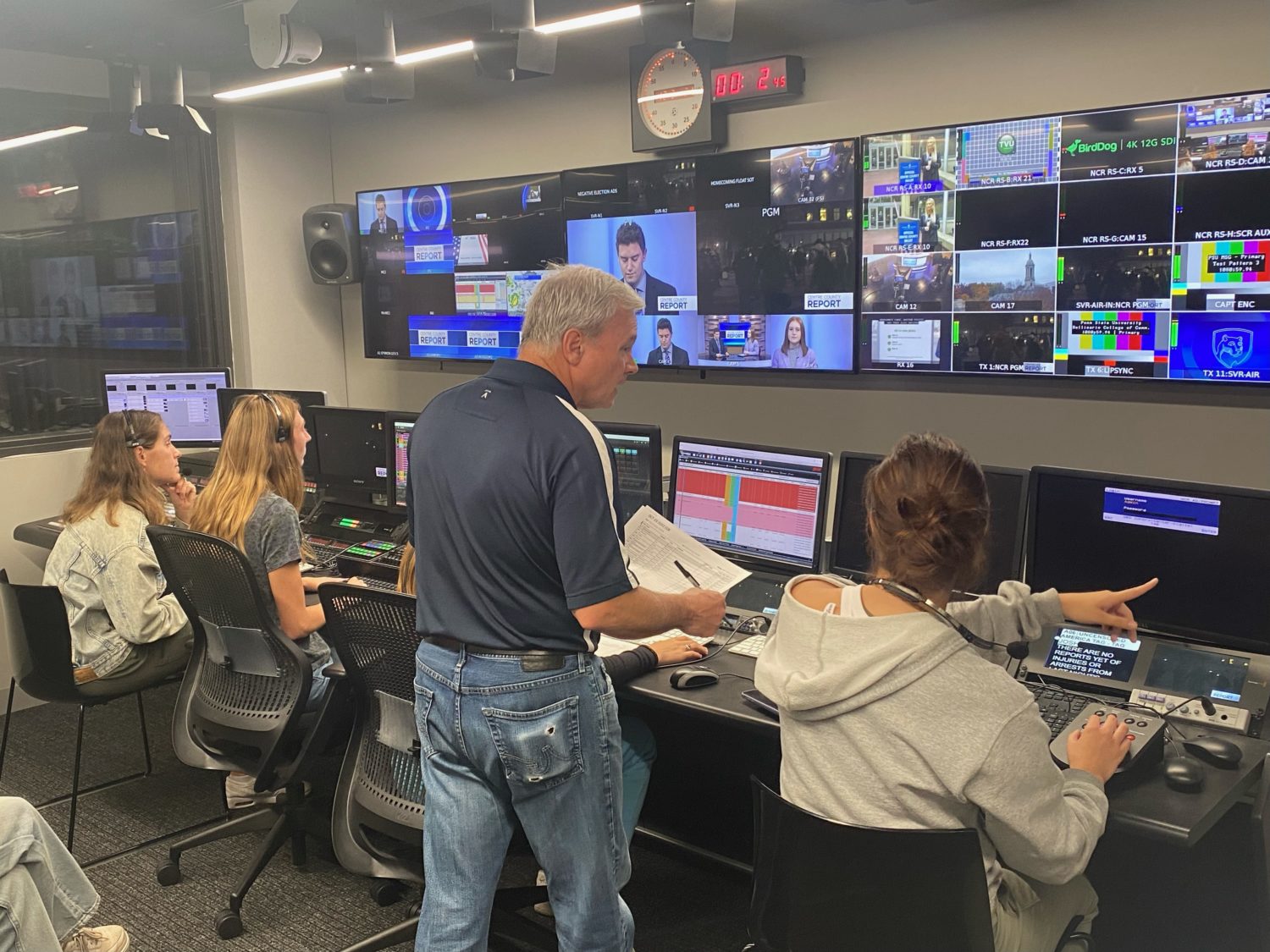There’s a great scene in my favorite journalism movie, “The Paper,” where Michael Keaton’s character — a classic New York tabloid editor — is forced to eat dinner out while a story he’s been corralling all day slips away as deadline approaches. His in-laws’ voices drawl into slow motion as the art on the walls seems to melt.
That’s how the students at Penn State had to be feeling last Monday when they were forced to eat dinner with … me.
OK, forced is probably too strong a word. My colleague Al Tompkins and I were on campus for two days to work with students, and we made plans to dine with a select group of them on our last evening in town. Normally I like to think of myself as good dinner company, but this night was different. The Proud Boys were on campus and things were escalating quickly.
The protests, violence and eventual cancellation of the “Stand Back & Stand By” event made The Washington Post, The New York Times, NPR and Vice, just to name a few. But it was the students on campus who nailed the coverage. The Donald P. Bellisario College of Communications’ TV newscast, Centre County Report, had a polished, impressive package, and I counted eight stories from the Daily Collegian that included video and photos from the scene.
Watch reporter Isabella Leahy interview provocateur Alex Stein right after a protestor spit on him — she went on to produce the newscast the next day, while Collegian editor-in-chief Megan Swift anchored.

Executive producer Isabella Leahy (center, in black) leads from the control room as her fellow students execute that day’s newscast (Photo by Barbara Allen)
All of this was unfolding in real time as Penn State’s top journalism students pretended to pay attention to their salmon filets, Tompkins and me.
But the truth is that we had way more fun than your typical post-conference dinner with strangers. We talked shop about how these editors and producers were keeping their student reporters safe, whether student protestors deserved anonymity, and how to use social media videos and photos ethically. It was completely OK to be on our phones checking the latest news every few seconds — sharing comments, suggesting directions and holding journalism court. And the moment their forks were down, these students were out the door — as they should have been.
I luckily got to go to bed at a decent hour, but many of the students I talked to the next day were up until 3 a.m. finishing their journalism work before reporting at 10 a.m. for the TV newscast class.
To the faculty at Penn State and beyond, I continue to insist: What you’re doing is working, and the students are paying attention. Keep it up. The industry needs you.
Classroom resources
“What makes an election rumor go viral? Look at these 10 factors” (Nieman Lab)
“Sourcing Secrets from NBC News’ Pete Williams” (NBCU News Academy video)
ICYMI
“More Americans are getting news on TikTok, bucking the trend on other social media sites” (Pew Research Center)
Staying current alert! “The ‘This American Life’ of ghost stories is captivating Gen Z” (Washington Post)
Here’s the latest example of a community editorial board. This kind of thing would be so great for a campus newspaper.
Hmm. Is 1,026 college students a representative sample? Inside Higher Ed reports on a study that finds “Over Three-Quarters of Students Plan to Vote in Midterms.” It might make an interesting man-on-the-street story, or even a cool poll to run on social media (or with a good researcher on campus).
Great journalism to share with your students
- Incredibly eye-opening, with implications for your community. Who’s Really Cycling In and Out of Cleveland’s Courts? (The Marshall Project)
- Wow, this lead! “BUILT & BROKEN: Female bodybuilders describe widespread sexual exploitation” (Washington Post). And don’t miss this, also from the Post: “How I wound up investigating the sport my father made famous”
This week’s Professor’s Press Pass
A recent Pew Research Center study confirms what you’ve probably suspected for a while — TikTok’s outsized influence is here to stay for news organizations. In this week’s Professor’s Press Pass, we look at what they need to do about it. Professor’s Press Pass is a library of classroom discussion questions about topics that center on the business and ethics of journalism. It’s $100 a year or $12 a month and is updated weekly.
One last thing
My colleague Tom Jones (get his newsletter if you don’t, it’s so helpful!) posted this Twitter thread and I’ve revisited it a few times as folks have added new stuff. This could actually be a fun, light class exercise as you discuss Twitter. You could ask everyone to share their favorites (good luck with your NSFW places) or even collect really good comms brands or breaking news best practices. Or you could just giggle at that E.T. tweet, as I did off and on for about 72 hours.
Resources for educators
- Get access to a growing library of case studies — Professor’s Press Pass.
- If your students are interested in a career in accountability journalism, they should consider taking this new course from MediaWise’s Campus Correspondents. They can learn the same fact-checking tools and techniques that professionals use in their day-to-day work. Bonus: It’s free.
- Honor free press, democracy and the distinguished careers of Bob Woodward and Carl Bernstein at Poynter’s Bowtie Ball. The duo will receive the Poynter Medal for Lifetime Achievement in Journalism with Carl Bernstein accepting the honor in-person on Nov. 12, 2022, in Tampa, Florida. Get tickets.







